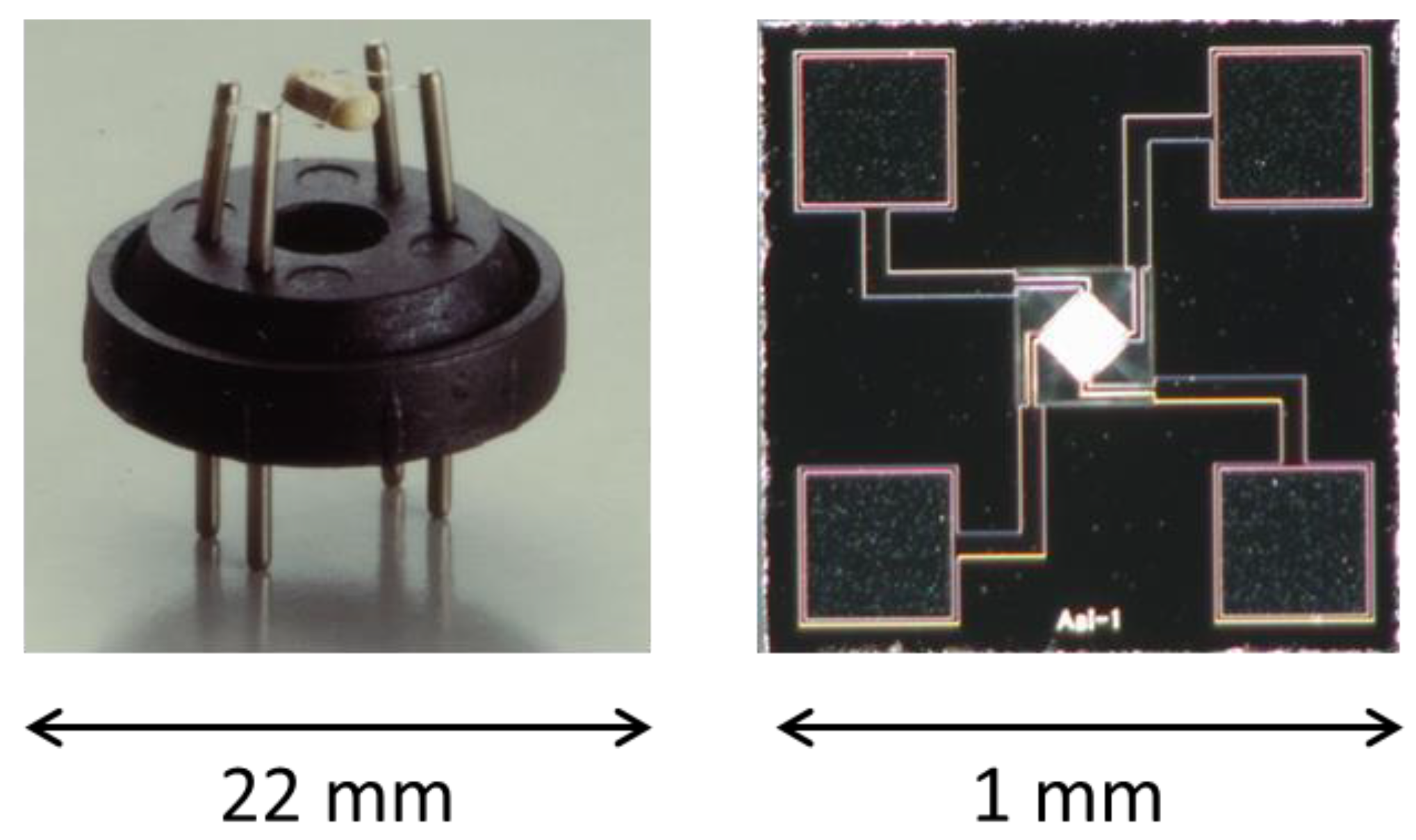Application Runs the Show: What Can We Learn about the Future from the Past? †
1. History and Current Status
2. Future Trends
References
- Ihokura, K.; Watson, J. Stannic Oxide Gas Sensors, Principles and Applications; CRC Press: Boca Raton, FL, USA; Ann Arbor, MN, USA; London, UK; Tokyo, Japan, 1994; 187p. [Google Scholar]
- Briand, D.; Courbat, J. Micromachined Semiconductor Gas Sensors. In Semiconductor Gas Sensors; Jaaniso, R., Tan, O.K., Eds.; Woodhead Publishing Series in Electronic and Optical Materials; Woodhead Publishing Limited: Oxford, UK; Cambridge, UK; Philadelphia, PA, USA; New Delhi, India, 2013; Chapter 6; pp. 220–260. [Google Scholar]
- Tanihira, T.; Yoshioka, K.; Shinnishi, K.; Izawa, K.; Kaneyasu, K. Development of CH4 Sensor Using MEMS Technology for Battery Operated Town Gas Leak Detector. Sens. Lett. 2011, 9, 414–417. [Google Scholar]
- Simon, I.; Barsan, N.; Weimar, U.; Bauer, M. Micromachined metal oxide gas sensors: Opportunities to improve sensor performance. Sens. Actuators B 2001, 73, 1–26. [Google Scholar]
- Available online: https://www.fujielectric.com/company/research_development/theme/mems_sensor.html (accessed on 1 May 2019).
- Available online: http://ams.com/eng/Products/Chemical-Sensors/Air-Quality-Sensors (accessed on 1 May 2019).
- Available online: https://www.sensirion.com/en/environmental-sensors/gas-sensors/ (accessed on 1 May 2019).
- Ulmer, H. Application of MEMS MOS Gas Sensors in Everyday Life: From Cars to Cooker hoods. In Proceedings of the 4th GOSPEL Workshop on: Gas Sensors Based on Semiconducting Metal Oxides: Basic Understanding & Applications, Tuebingen, Germany, 6–7 June 2011. [Google Scholar]
- Di Natale C, Paolesse R, Martinelli E, Capuano R; Solid-state gas sensors for breath analysis: A review. Anal. Chim. Acta 2014, 824, 1–7.
- Available online: https://www.niox.com/en/ (accessed on 1 May 2019).
- Available online: https://www.atsjournals.org/doi/10.1164/ajrccm.160.6.ats8-99 (accessed on 1 May 2019).
- Oprea, A.; Courbat, J.; Briand, D.; Barsan, N.; Weimar, U.; De Rooij, N.F. Environmental monitoring with a multisensor platform on polyimide foil. Sens. Actuators B 2012, 171–172, 190–197. [Google Scholar]

© 2019 by the authors. Licensee MDPI, Basel, Switzerland. This article is an open access article distributed under the terms and conditions of the Creative Commons Attribution (CC BY) license (http://creativecommons.org/licenses/by/4.0/).
Share and Cite
Barsan, N. Application Runs the Show: What Can We Learn about the Future from the Past? Proceedings 2019, 14, 53. https://doi.org/10.3390/proceedings2019014053
Barsan N. Application Runs the Show: What Can We Learn about the Future from the Past? Proceedings. 2019; 14(1):53. https://doi.org/10.3390/proceedings2019014053
Chicago/Turabian StyleBarsan, Nicolae. 2019. "Application Runs the Show: What Can We Learn about the Future from the Past?" Proceedings 14, no. 1: 53. https://doi.org/10.3390/proceedings2019014053



